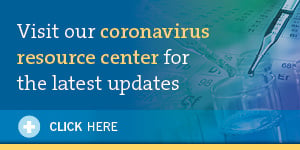Recipients of loans from the Paycheck Protection Program (“PPP”)—a Small Business Administration (“SBA”) loan program established by the Coronavirus Aid, Relief, and Economic Security Act (“CARES Act”) to assist businesses harmed by the coronavirus pandemic—have faced a rapidly changing regulatory landscape ever since the Program’s launch in April 2020. The rules now seem poised to change yet again with SBA’s proposed release of “loan necessity questionnaires,” apparently designed to seek financial and other information from PPP borrowers who received loans with an original principal amount of $2 million or more. SBA’s stated reason for collecting this information is “to evaluate the good-faith certification” that borrowers made “that economic uncertainty made the loan request necessary.” The information being collected may signal the adoption of new standards around PPP loan necessity. Affected borrowers should tread carefully in addressing these proposed forms, consider commenting to the agency on the proposed retrospective evaluation of certifications by the November 25 deadline, and ensure that all documentation supporting the certifications is available and presented as appropriate.
Background: The CARES Act established certain eligibility criteria for loans under the PPP, which launched on April 3, 2020. One such requirement was the borrower’s “necessity certification,” which required PPP applicants to certify that economic “uncertainty” made their PPP loan “necessary . . . to support . . . ongoing operations.”1 Under the PPP, loan funds are forgivable if used to pay for certain categories of expenses during the borrower’s “covered period.”2 The “covered period” may be eight or twenty-four weeks from disbursement, depending on when the loan was disbursed.3
On April 23, 2020, SBA provided additional guidance regarding the necessity certification, explaining that “[b]orrowers must make [the necessity certification] in good faith, taking into account their current business activity and their ability to access other sources of liquidity sufficient to support their ongoing operations,” and that “it is unlikely that a public company with substantial market value and access to capital markets will be able to make the required certification in good faith.”4 SBA provided no further criteria for determining whether a PPP loan was “necessary.”
On April 28, 2020, SBA created a safe harbor for PPP loan recipients to return their PPP funds by a certain date. Borrowers who did so were deemed to have made the necessity certification in good faith.5 On April 29, 2020, SBA issued further guidance stating that it would “review all loans in excess of $2 million . . . following the lender’s submission of the borrower’s loan forgiveness application.”6
PPP Loan Necessity Questionnaires: On October 26, 2020, SBA published a notice in the Federal Register seeking comments on two questionnaires—one directed to for-profit borrowers and the other to non-profit borrowers—that SBA stated it intends to use to gather additional information from borrowers who received PPP loans with an original principal amount of $2 million or more.
The stated purpose of the questionnaires is to “facilitate the collection of supplemental information that will be used by SBA loan reviewers to evaluate the good-faith certification that [borrowers] made on [their] PPP Borrower Application . . . that economic uncertainty made the loan request necessary.”7 The questionnaires are planned to be distributed to borrowers via their lenders, and, according to the notice, a borrower who receives a questionnaire must return the completed form to the lender within ten business days of receipt.8 Lenders must then upload the information received from borrowers within five business days.9 “Failure to complete the form . . . may result in SBA’s determination that [a borrower was] ineligible for either the PPP loan, the PPP loan amount, or any forgiveness amount claimed, and SBA may seek repayment of the loan or pursue other available remedies.”10
Impacted Borrowers: These questionnaires signal increased scrutiny of borrowers receiving more than $2 million in loan proceeds, particularly if such borrowers’ operations or financial health were not as significantly impacted by the coronavirus pandemic as originally expected or feared. Notably, the questionnaire contains a number of questions about borrowers’ subsequent financial performance, suggesting the possibility that a borrower’s asserted need for PPP funds—when requested during a time of great business uncertainty—could be called into question in hindsight, if a borrower ultimately performed better than expected.
SBA’s prior guidance regarding the necessity certification focused on a borrower’s economic uncertainty and access to liquidity at the time the necessity certification was made. Now, however, the questionnaires suggest that SBA may consider other factors when determining whether a borrower made the necessity certification in good faith. For example, the questionnaires seek detailed information regarding the borrower’s post-application financial performance and health, including information regarding the borrower’s year-over-year revenue in the second quarter of 2020 as compared with 2019. The questionnaire also asks about the borrower’s capital improvements, dividends or distributions, employee and owner compensation, and debt pre-payments. This inquiry into borrowers’ ex post financial status reflects a potentially concerning shift from the PPP application’s original focus on whether the borrower believed in good faith at the time of the application that economic uncertainty made PPP funds “necessary” to support operations. Now, it seems that SBA may evaluate whether funds were necessary in hindsight, based on a borrower’s subsequent financial performance and health.
Elsewhere these questionnaires seek information about other benefits a borrower might have received under the CARES Act during the covered loan period.11 This question should capture the attention of any borrowers that received multiple forms of CARES Act support. While the Special Inspector General for Pandemic Recovery in his Initial Report to Congress acknowledged “multiple forms of financial support to a single individual or entity may well be sound policy” and appropriate under certain circumstances, he goes on to raise questions about “the potential for widespread double- and triple-dipping under the CARES Act.”12 His report then notes that Congress “positioned both Treasury and the Federal Reserve as lenders of last resort” and “expressly limited” CARES Act loans to borrowers “for which credit [was] not reasonably available.”13
Other borrowers seemingly likely to receive increased scrutiny as a result of SBA’s proposed loan necessity questionnaires could include businesses affiliated with private equity or venture capital firms, or hedge funds. Question 10, for example, specifically asks for-profit borrowers whether a private equity, venture capital, or hedge fund owned twenty percent or more of the borrower’s outstanding equity securities on the date of the borrower’s PPP loan application. Similarly, the questionnaire for non-profit borrowers inquires about the size of an institution’s endowment and tuition revenue, signaling possible heightened scrutiny for colleges and universities, health care organizations, and other non-profits with large endowments.
These loan necessity questionnaires raise issues for lenders as well. According to SBA guidance, lenders are not eligible for a processing fee if SBA determines that a borrower is ineligible for a PPP loan and processing fees are subject to clawback.14
Next Steps & Take-Aways: According to SBA’s October 26, 2020 notice in the Federal Register, these proposed PPP Loan Necessity Questionnaires are subject to public comment through November 25, 2020 (although the same disclosure states that SBA had emergency authorization to collect this information through October 31, 2020, and there are reports that some borrowers may have already begun to receive these questionnaires).
While the timing of the questionnaires’ further use remains unclear, borrowers that received more than $2 million in PPP loan proceeds might wish to consider commenting as a part of the public notice and comment process. Borrowers with concerns about SBA’s evaluating the good faith of their prior necessity certification in light of ex post information about their subsequent financial performance and other criteria that were not apparent or knowable at the time the certification was originally made might be particularly interested in participating in that notice and comment process.
Given the uncertainty around SBA’s authority to collect this information at least before the conclusion of the notice and comment period and the final adoption of the questionnaires, any borrower receiving a questionnaire should consult with counsel about the borrower’s options before providing the requested information. In the meantime, borrowers should carefully review and document the reasoning behind their determination of economic uncertainty and necessity at the time of the application, and document any basis for seeking loan forgiveness. Borrowers should also consider waiting to apply for loan forgiveness until more is known about how SBA intends to use the information sought by these proposed new questionnaires, as loan forgiveness applications request some of the same information as is sought by the proposed Loan Necessity Questionnaires.15 A borrower can request loan forgiveness anytime before a loan’s maturity, which in most cases is still years off.16 In the event of a dispute with SBA, borrowers may avail themselves of an administrative appeals process, and it is also important to ensure that all documentation supporting the original certification is made available in that process.
For more information about this issue, please consult with your usual Ropes & Gray advisor, or any of the lawyers listed below.
- P.L. 116-136 § 1102(a)(2)(G)(i).
- P.L. 116-136 § 1106; P.L. 116-142 § 3(b).
- P.L. 116-142 § 3(b).
- Paycheck Protection Program Loans Frequently Asked Question (“FAQs”), Small Business Administration, FAQ 31 (Oct. 7, 2020), https://www.sba.gov/sites/default/files/2020-10/Final%20PPP%20FAQs%20%28October%207%2C%202020%29-508.pdf.
- Business Loan Program Temporary Changes; Paycheck Protection Program—Requirements—Promissory Notes, Authorizations, Affiliation, and Eligibility, 82 Fed. Reg. 23,450, 23,451-52 (Apr. 28, 2020) (to be codified at 13 CFR §§ 120-21).
- Paycheck Protection Program Loans Frequently Asked Question (“FAQs”), Small Business Administration, FAQ 39 (Oct. 7, 2020), https://www.sba.gov/sites/default/files/2020-10/Final%20PPP%20FAQs%20%28October%207%2C%202020%29-508.pdf.
- Small Business Administration, SBA Form 3509, Paycheck Protection Program Loan Necessity Questionnaire (for-Profit Borrowers) (2020); Small Business Administration, SBA Form 3510, Paycheck Protection Program Loan Necessity Questionnaire (Non-Profit Borrowers) (2020).
- Id.
- Id.
- Id.
- Id.
- Special Inspector Gen. for Pandemic Recovery, Initial Report to Congress at 50 (Aug. 3, 2020).
- Id.
- Business Loan Program Temporary Changes; Paycheck Protection Program—SBA Loan Review Procedures and Related Borrower and Lender Responsibilities, 85 Fed. Reg. 33,010, 33,014 (June 1, 2020) (to be codified at 13 CFR § 120).
- Compare Small Business Administration, SBA Form 3508S, Paycheck Protection Program Loan Forgiveness Application Form (2020), with Small Business Administration, SBA Form 3509, Paycheck Protection Program Loan Necessity Questionnaire (For-Profit Borrowers) (2020), and Small Business Administration, SBA Form 3510, Paycheck Protection Program Loan Necessity Questionnaire (Non-Profit Borrowers) (2020).
- Business Loan Program Temporary Changes; Paycheck Protection Program—Revisions to Loan Forgiveness and Loan Review Procedures Interim Final Rules, 85 Fed. Reg. 38,304, 38,306 (June 26, 2020) (to be codified at 13 CFR § 120).
Stay Up To Date with Ropes & Gray
Ropes & Gray attorneys provide timely analysis on legal developments, court decisions and changes in legislation and regulations.
Stay in the loop with all things Ropes & Gray, and find out more about our people, culture, initiatives and everything that’s happening.
We regularly notify our clients and contacts of significant legal developments, news, webinars and teleconferences that affect their industries.




